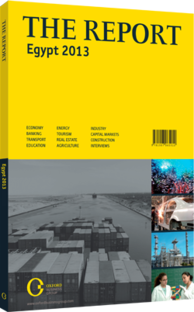OBG talks to ElHamy ElZayat, Chairman, Egyptian Tourism Federation

Interview: ElHamy ElZayat
In which sub-segments and from which markets have you seen the biggest drops?
ELHAMY ELZAYAT: The most affected areas have been the meetings, incentives, conferences and exhibitions segment and cultural tourism in Cairo. Before the revolution total daily revenue generated by cultural tourism in Cairo for the Ministry of Tourism and Antiquity was over LE1m ($155,600). Now this figure has dropped to LE70,000-80,000 ($10,892-12,448), which shows the extent of the challenges the industry is facing.
The least affected areas in the sector have been the Red Sea resorts of Hurghada, Sharm El Sheikh and Marsa Alam, with occupancy rates of 70%, 52% and 22%, respectively. Rates in Luxor are as low as 15%, in Aswan they are 10%, and Nile cruises have not exceeded 5%. People also forget the impact of the global financial crisis on Egypt’s tourism sector, which I would say was the beginning of the gradual decline of the industry. The financial crisis led to a reduction in tourist spending, and although we may have had record figures for 2010, spending was lower than expected.
We have seen changes in the market in terms of visitors from different locations. Traditionally, before the crisis Russian visitors were the number one tourists in Egypt. Russian tourists predominantly visit the Red Sea areas of Hurghada and Sharm El Sheikh, reaching as high as 2.8m visitors per year, followed by Germans and the British with around 1.5m visitors each. Visitors from Italy have dropped from over 1m to 700,000; however, this was offset by a significant rise in Polish tourists to over 600,000. We also saw a sizable number of Ukrainian tourists. Visitors from Australia and New Zealand are low, and the number of tourists from the US and France has continued to drop. South American visitors have always been few in number.
What measures can be taken to strengthen confidence and reassure potential visitors?
ELZAYAT: Unfortunately coverage of Egypt by the international press is a major issue as it has focused on sporadic disturbances. However, we cannot change that. What the federation and the ministry must do is to continue strengthening relationships with global tour operators to make sure that Egypt remains on their shelves and in their catalogues. However, to get travellers to choose Egypt is a different challenge. We cannot control the news, so we must arrange events to lure and attract positive attention. We are organising special events such as a camel race and a car rally in 2015.
We have restored a 2700-metre-long ally lined with sphinxes to look as it did 2000 years ago; this is about bringing back Egypt’s history. We are also going to promote destination tourism, the Red Sea or Luxor specifically. In this way we are keeping Cairo and other areas that are frequently in the news out of our promotional campaigns.
What specific steps are being taken to diversify and tap into new growth markets?
ELZAYAT: Ultimately we need to increase air linkages between these markets, especially in places like Brazil, Argentina, Chile, Korea and Japan. Visitors from Japan and Korea are high spenders because they are mostly cultural visitors. The key to unlocking the potential of long-haul tourism is to combine regional tourism packages to include Egypt, Jordan and Turkey. The most popular regional package for long-haul travellers right now is Egypt, Turkey and Greece. There are plans to create more regional packages in the future, but for this we need airlines to play a bigger role and to have a single airline carrying passengers across the region.
How will Egypt handle its planned tourist inflows of 25m tourists by 2020?
ELZAYAT: Our priorities should include not only meeting our targets in terms of numbers, but also increasing yields and improving expenditure. The key is to make sure that tourists travel outside of resorts in order to allow expenditures to spill into the wider economy.
You have reached the limit of premium articles you can view for free.
Choose from the options below to purchase print or digital editions of our Reports. You can also purchase a website subscription giving you unlimited access to all of our Reports online for 12 months.
If you have already purchased this Report or have a website subscription, please login to continue.

